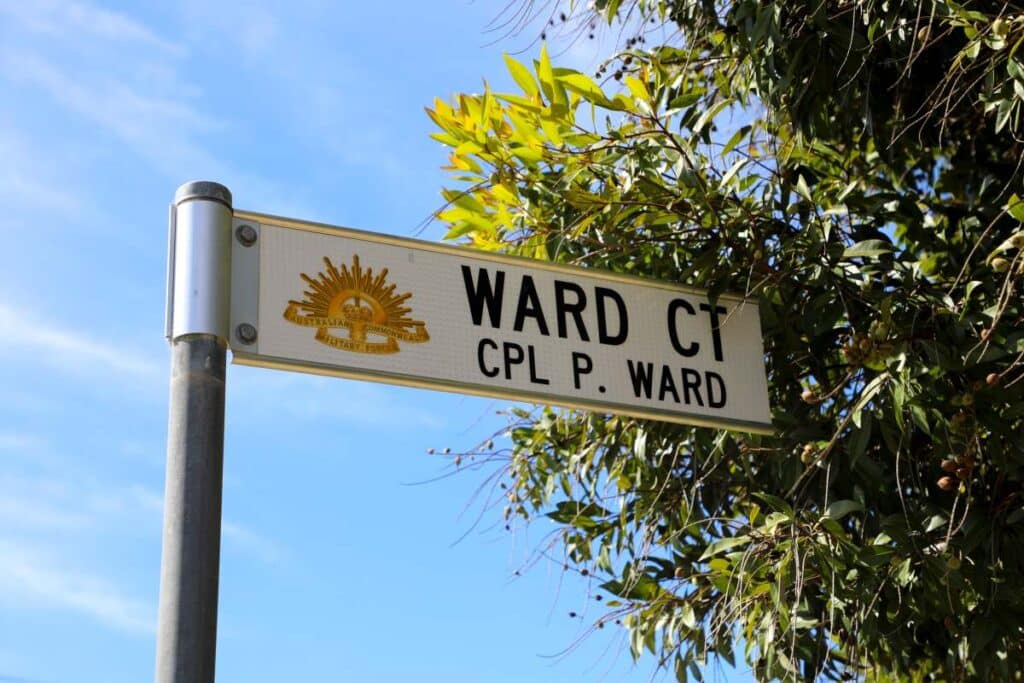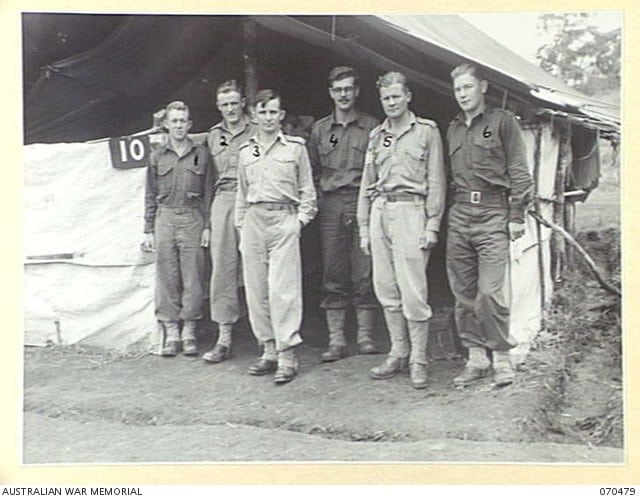
Ward Court in Kepnock has been highlighted as part of Bundaberg Regional Council's Streets of Remembrance Program.
The program sees the badge under which local veterans served added to the signs of Bundaberg Region streets named in their honour, ensuring their stories remain an integral part of the community's heritage.
Ward Court was named in September 1981 after the well-respected Ward family of Bundaberg, including Corporal Patrick Ward who served in WWII.
According to The Chronicle, Corporal Patrick Ward was born in Cordalba on 16 October 1922 and was almost 19 when enlisted in 1941.
He became a member of the Australian Imperial Force in 1942 and served to the end of 1943, receiving six medals for his efforts in the war.
Corporal Ward’s family provided a summary of his service as outlined on Bundaberg Regional Council's Streets of Remembrance project page, with some excerpts included below:
On entering the army like everyone else, Pat was a private.
After passing a course in Intelligence and being made a Corporal, he was known as a Company “I” Man.
He was then transferred to the 18th Infantry Brigade, Intelligence Section and remained with this unit until his discharge.
From Cairns, he went to New Guinea but he didn't think he would get any service there because the fighting in New Guinea was thought to be decreasing.
In New Guinea he was at Port Moresby, which was a major air force and army base, but was soon flown to the Ramu Valley, also in New Guinea, by DC3 aircraft.
Here at Ramu Valley and Shaggy Ridge an Australian offensive, Operation Cut Throat, was to occur.
The famed 18th Brigade were considered appropriate to take out the key Japanese-held defence positions along the Ridge.
After some time here, he was then shifted to Balikpapan on the island of Borneo which was part of the Dutch East Indies.
This was where Pat was situated when the war ended.

Pat was not injured during the war but became very ill coming back on the ship from New Guinea having contracted Pleurisy and Malaria.
He went to Greenslopes hospital for 4 months and then to a convalescent home for a three-month recovery period.
He then went to a convalescent camp at Burleigh Heads (Gold Coast), and from there back to his unit headquarters at Atherton Tablelands.
In all 11 months.
Discharged
Soldiers were transferred back to Australia to be discharged on a points system based on marital status and child status.
So Pat was one of the last to be discharged as he was single, not engaged and had no children.
He was sent to the units stores account section until he finally departed from Balikpapan, Indonesia on 19 January 1946.
However, when he arrived back in Australia on 25 January 1946, where he had to have medical tests to be discharged, they showed he was again ill, this time with Tuberculosis.
Pat was discharged from the army on 31 October 1946, but spent three years recovering at Greenslopes Hospital and Kenmore Repatriation Centre, outside Brisbane.
- Streets of Remembrance: Private Laack




